Fish in Focus: Yellowfin shiner, Notropis lutipinnis
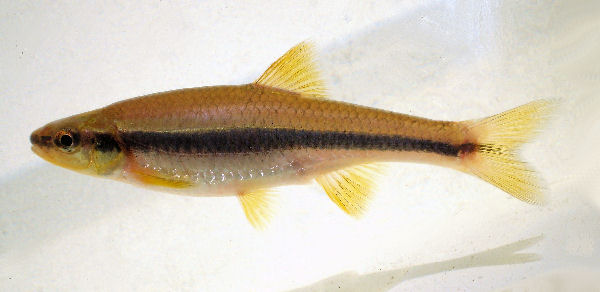
Notropis lutipinnis
Photo by Michael Wolfe
Fish in Focus: Yellofin Shiner, Notropis lutipinnis
(Originally published in American Currents Summer 2013 by Matt Knepley and Michael Wolfe)
The Yellowfin Shiner (Notropis lutipinnis) occurs in the Edisto, Savannah, Altamaha, and Chattahoochee drainages of South Carolina and Georgia. This species may also be found in the uppermost reaches of the Little Tennessee River system in North Carolina. Though its range does extend below the Fall Line, most of it is above it, and their populations seem to increase with the altitude. Within its range, it is a very common species, and easily accessible, often found in very shallow streams and ditches.
As small minnows go, this fish has a rather “beefy” build; especially in fully mature specimens. Maxing out at 3 inches in length, they don’t appear intimidating by any stretch, but they certainly don’t look fragile either.
Yellowfin Shiners can be identified by the following characteristics. The upper half of their bodies is a brownish color. A black stripe extends from the tip of a terminal mouth to the end of the caudal fin. Beginning behind the eye, a thin blue neon line runs along the top edge of the black stripe. The lower half is a whitish color. Fins, true to their name, are often yellow (Figure 1).
In spite of these consistencies in appearance, individual Yellowfin Shiner coloration can be fairly variable. The brownish upper third of their body may be of a sandy, reddish, greenish, or yellowish nature that may be either of a light or dark hue. The dark central stripe usually appears black, but in certain lighting can take on a bluish cast. The narrow neon-ish stripe is larger and more yellow in some populations. It also can vary with the lighting, and may be more greenish or yellow. The length of this electric stripe may also vary depending on light (Figure 2).
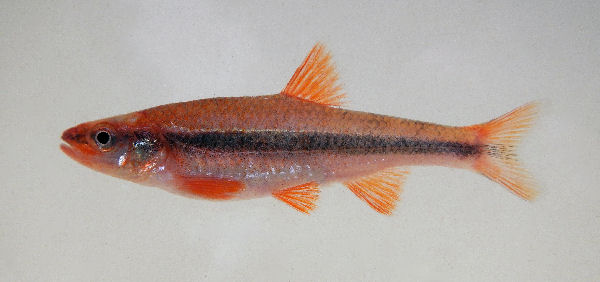
Breeding males develop very intense red hues that seem to radiate from the very depths of their bodies. When colored up to their peak, their stripes aren’t even visible. The fins of breeding males may be bright red or yellow. Michael has even documented a Georgia population with very white fins, and another that has so many melanophores on the fins rays that they appear to be grey (Figure 3).
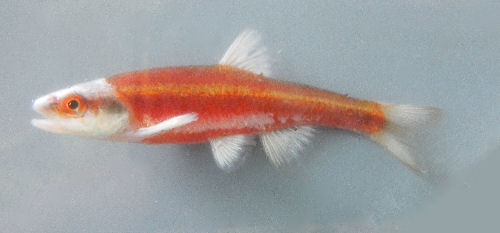 | 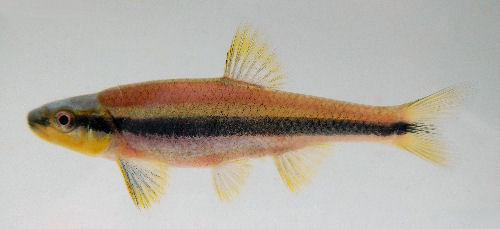 |
Yellowfins are fond of smaller, flowing waterways that feature rocky bottoms. A personal observation is that they have an affinity for overhanging cover. Brushy tree limbs, overgrown riparian vegetation, and other such objects that lie close to the water surface in a sunny spot are more likely to hold Yellowfins than adjacent sunny stream areas without overhang, even when suitable submerged cover is present. One thought is that they are looking for a quick meal; hanging out where the terrestrial insects are most likely to fall into the water. Similarly, if a stream has overhanging cover on both banks, but one side is shaded while the other bank is sunny, the Yellowfins will be more numerous on the sunny side. Any low-hanging cover will be used. Indeed, my (Matt) first experience with these little beauties was in a tiny Athens, Georgia area headwater with fellow NANFAns Michael Wolfe and Keith Hudgins. A road construction runoff prevention tarp had, ironically enough, washed into the stream. It managed to do so in a manner that left it floating on the surface in the sun. Dozens of Yellowfins were residing underneath it. Even though we found other N. lutipinnis in this cover-rich stream, they definitely preferred the paradoxical shady spot in the sun. Though this incident occurred in early February, this pattern seems to hold for most of the year. Only in the hottest of summer days do they seem to favor total shade (Figures 4 and 5).
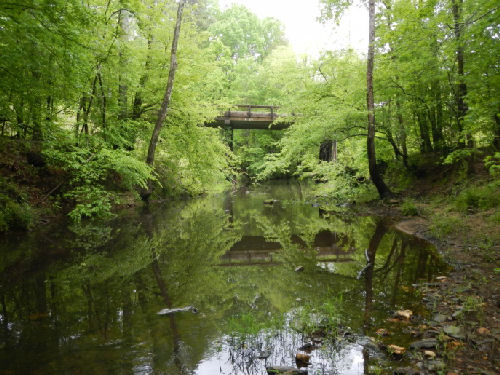 |  |
Notropis lutipinnis is a summer spawner that appears to require the presence of another species of fish to reproduce successfully. Bluehead Chubs (Nocomis leptocephalus) build stream bottom nests of pebbles upon which they reproduce. Several other fish species spawn over Bluehead Chub nests, of which Yellowfins are one. Some studies have indicated Yellowfins may actually be obligates of Bluehead Chubs. (Figures 6 and 7).
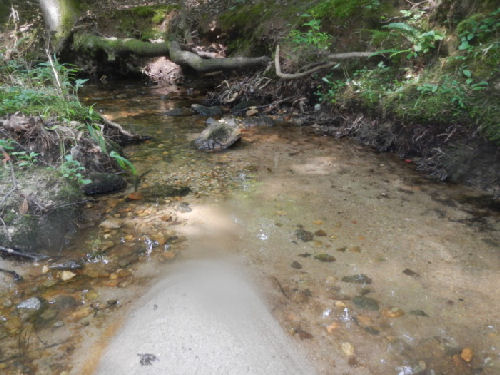 | 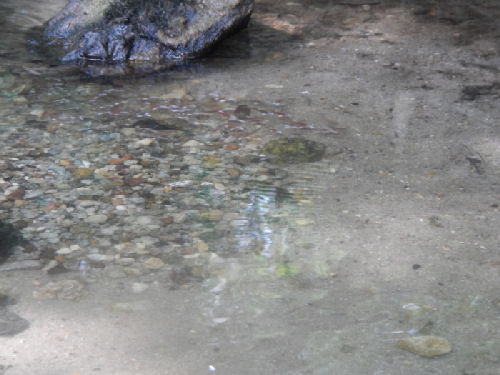 |
Yellowfin Shiners are closely related to Greenhead Shiners (N. chlorocephalus), and are very similar in appearance. At the present time there is much research being done to determine just how closely they are related, and if they warrant being further divided into even more species.
Yellowfin Shiners make great aquarium fish. They are small, colorful, active, peaceful schoolers that maintain high visibility. They are especially rewarding for beginning aquarists as they are quite hardy and enthusiastically eat just about any fish chow lobbed into their tank. In nature they are highly omnivorous. In the aquariums they are equally so. They learn quickly to recognize “the food guy” and race to the surface to be first in line for dinner. In this respect, although not aggressive in any way, they must be kept with other tank mates that are willing to compete for food. In the wild, they are often found with Nocomis and Cyprinella species and these are good tank mates as well. When kept in groups it is not uncommon for some males to “color up” at any time of year. Cool water changes, increased photo-periods, and new or highly nutritious foods quite often will stimulate these color changes; but they have also occurred in my tanks for no identifiable reason. The color may only last during the excitement, or may continue for days.
References
Page, L. M. and B. M. Burr. 2011. Peterson Field Guide to Freshwater Fishes of North American North of Mexico. Houghton Mifflin Harcourt. 663 p.
Rohde, F. C., R. G. Arndt, J. W. Foltz, and J. M. Quattro. 2009. Freshwater Fishes of South Carolina. The University of South Carolina Press. 430 p.